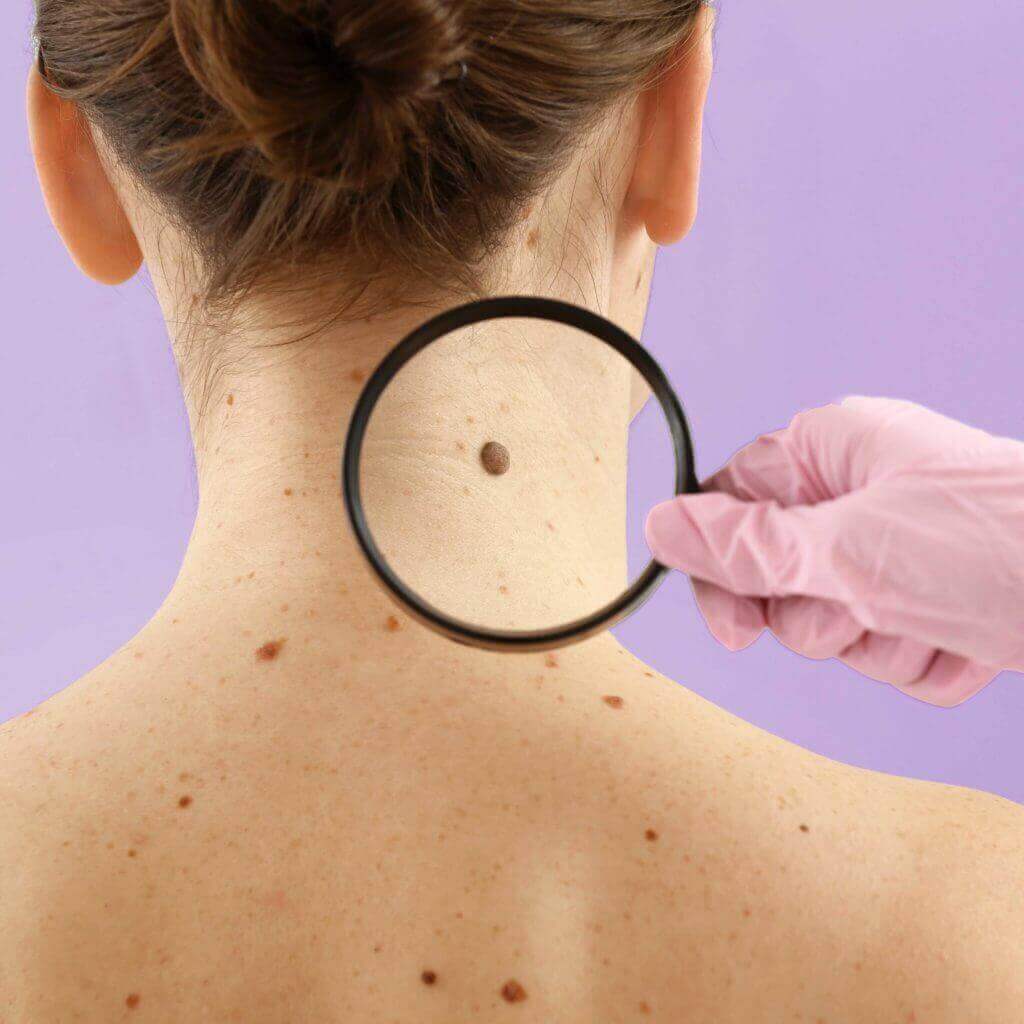The month of May is skin cancer awareness month and I’d like to take this opportunity to address this rapidly rising issue that our world is facing. Although skin cancer is increasing in incidence rate worldwide, the good news is that it is considered to be the most preventable forms of cancer.
Types:
The skin is made of various cells, many of which are in constant division. Round basal cells in the first layer of the skin, also known as the epidermis, flatten as they rise to replace dead, flaking squamous cells on the surface. Melanocytes are pigment producing cells and Merkel cells give skin its ability to sense touch. It is also important to consider the skins’ other cell types like immune cells, all of which can become abnormal in skin cancer.
- Basal Cell Carcinoma (BCC): is the most common type and arises from the basal cell layer on sun exposed areas like head and neck. It is a slowly growing tumor and rarely metastasizes or spreads.
- Squamous Cell Carcinoma (SCC): 2nd most common type and arises from keratinocytes in sun exposed areas such as the neck, ears, lips, face or the back of the hand, but they may develop in other areas, such as in scars, skin ulcers or the genital region. They are more likely than basal cell carcinomas to invade fatty tissue beneath the skin and metastasize.
- Melanoma: the deadliest and most serious form of skin cancer that arises from melanocytes in both sun exposed and non-sun exposed areas of the skin. It is the most aggressive type that rapidly grows and has the potential to spread to other areas of the body and metastasize.
- Other types: eg. Merkel cell carcinoma, Kaposi sarcoma or lymphoma of the skin
Risk factors:
The most important predisposing factor is exposure of unprotected skin to ultraviolet rays (UV). A period of as little as 15 minutes can cause harm to the skin and long-term complications. Even if it’s cool and cloudy, you still need sun protection. A common misconception is that the the temperature does the damage, however studies have shown that the UV rays are responsible for this effect. About 90 percent of nonmelanoma skin cancers and 85 percent of melanoma cases are associated with exposure to this risk factor. I also strongly advise against tanning beds or lamps that transmit high amounts of UV rays directly onto the skin and hence cause lasting harmful effects.
Other risk factors include: living in sunny and high altitude areas or those that are closer to the equator, lighter skin types like in Caucasians, history of sun burn especially if those were blistering burns, family history of skin cancer, the presence of multiple moles on the skin and suppression of the immune system.
Signs to watch out for:
A change in your skin is the most common sign of skin cancer. This could be a new growth, a sore that doesn’t heal, or a change in a pre-existing mole.
For melanoma specifically, a simple way to remember the warning signs is to remember the A-B-C-D-Es of melanoma:
- “A” stands for asymmetry. Does the mole have an irregular shape with two parts that look very different?
- “B” stands for border. Is the border irregular or crooked?
- “C” is for color. Is the color homogenous and consistent?
- “D” is for diameter. Is the mole or spot larger than the size of a pea (>6mm)?
- “E” is for evolving. Has the mole changed rapidly during the past few weeks or months?
Since this month is skin cancer awareness month, take this chance to examine yourself for all the above-mentioned signs and consult your dermatologist in case of any suspicious lesions.
Treatment options:
There are various treatment modalities for the treatment of skin cancer that depend on the type of the lesion as well as its location and size. These include, but are not limited to:
- Cryosurgery
- Excisional surgery
- Mohs surgery
- Radiation therapy
- Chemotherapy
- Photodynamic therapy
- Biological therapy
Early detection is key for successful treatment, therefore regular self-examination is imperative. If any changes in the skin are noticed, we advise that you pay your dermatologist a visit. Don’t forget that prevention is always better than cure, so let your sunscreen be your best friend. For more tips on how to prevent skin cancer, read our other articles and keep up to date with our blog.

